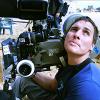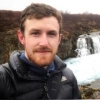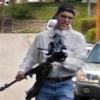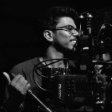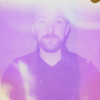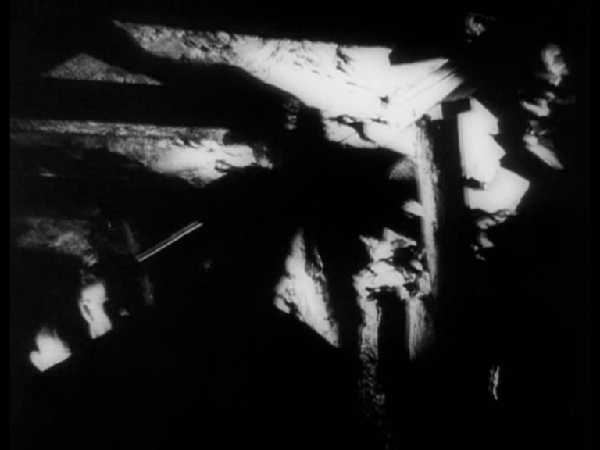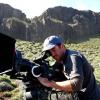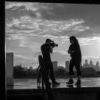Search the Community
Showing results for tags 'documentary'.
-
Back in November 2019 my friend Borja Larrondo asked me if I wanted to shoot a new commercial for Medecins Du Monde like the previous one that we had shot together in 2018 but with three twists: 1) It was going to be set in an unknown (at the time) location in Africa. 2) We were going to document what was happening in that unknown location in Africa. 3) It was going to be during nighttime and with no light at all! I obviously said yes and after months of discussions and preparations we went to Sierra Leone to shoot a documentary about the reasons as to why hospitals there didn't have electricity and how that affected the people from different areas of the country. We were in Sierra Leone for several days and when we went back to Spain we had 3 days to review the material and edit it because Medecins Du Monde Spain wanted to launch the campaign as soon as possible.. Nerea Mugüerza, our editor, did an amazing job with all the footage that we got, she really shaped the documentary and created a sense of story. Not only that but she also created the different cuts for the commercial campaigns that the client wanted to deliver. Right after those 3 days we were ready to colour grade the commercial cuts and then Covid happened and Medecins Du Monde stopped all the processes. At that time we were really sad because we didn't know when we were going to be able to show the reality of what was happening in Sierra Leone but it really helped us achieve what we wanted to achieve in the post production process with the documentary and the commercial campaigns. Because of Covid we were able to work with extraordinary colour grader Jenny Montgomery from Company 3, which was like a dream for us because we didn't have any money to give to them. We sent her the material and when it came back it was the first time in my life that I didn't have anything to say in a colour grade other than: "WOW!". Sound postproduction had more time to work on it and when we finished everything several months later we still didn't know what was going to happen with the commercial campaigns. It turns out that Medecins Du Monde did know what was going to happen because they asked us to shoot a similar documentary in December 2021 focused on the lack of energy in one part of Madrid called "La Cañada Real", which you can learn about on here (https://www.theguardian.com/world/2021/oct/27/you-kind-of-die-life-without-power-in-the-canada-real-spain). I joined Borja and we went to La Cañada Real to talk to people and convince them to let us film their daily lives, after one week being there we grabbed a camera and we started shooting for 2 days. This time Medecins Du Monde Spain wanted to broadcast the campaign as soon as they could and that meant that we weren't going to have the luxury of time to post produce things as we wanted. Regarding colour grading we decided that we wanted to work with people who understood Madrid and the culture of La Cañada Real and after some suggestions from the production company, Lobo Kane, we went to colour grade with GradePunk and Sebastian did an amazing job trying to maintain the quality of the colour grading that we had in Sierra Leone but giving a distinctive look to the part in Madrid that he was colour grading. The great @Phil Rhodes wrote a wonderful article about the documentary back in July 2020 when we were in the middle of knowing who was going to colour grade the documentary. You can read about it on here: https://www.thebroadcastbridge.com/content/entry/15328/creative-analysis-part-3-the-road-bad-the-place-dark-from-the-cinematograph As of now, the documentary has been selected and showed in different film festivals and has gotten one cinematography award, the BEST CINEMATOGRAPHY AWARD (INTERNATIONAL SHORT) at the Thin Line Film Festival. The commercial campaign has gotten two cinematography awards so far. Best Cinematography at the Emerging Directors Awards 2022 in Ireland and the Bronze Award in Film Craft in the CDEC in Spain 2022. You can watch the commercial campaign here And the trailer for the documentary here
- 18 replies
-
- 3
-

-
- sonyfx9
- supreme prime
-
(and 4 more)
Tagged with:
-
Hey there! I'm a cinematographer mainly working on documentary projects. For the next feature I'm about to work on, we'll have to shoot two characters in a car, driving from Belgium to Lebanon over a period of one month. We're thinking to rig a camera in the center with a wide lens to have a 2-shot, and shoot in 6k in order to be able to crop the image and have 2 different close-ups. The camera we're planning to use is the Z CAM E2-F6, mainly for it's small form factor. I'm looking for advise on how to monitor and control the camera from another car (we don't want any crew members in the main car). Do you think the wi-fi antenna and the app would cover the distance? Or is it better to use a something like Teradek (Teradek Bolt 500 LT )? But in this case, would it be also possible to control the camera settings? Or is there something we could do with the camera's Gigabit Ethernet connection? Or maybe someone has experience with something similar and would suggest another camera or setup? Any hints or advise on this would be greatly appreciated! Thanks!
- 1 reply
-
- z cam
- wireless video
-
(and 2 more)
Tagged with:
-
Hey everyone! Hope you're all well I just wanted to share our latest short film 'RISE', which I shot last year in the mountains of Snowdonia, UK - vimeo.com/674155543 Within the unforgiving environment, the walls of a Welsh quarry provide a climber with the physical and mental strength to prevent a functional neurological disorder from defining who she is, but also to find solace and reconnection through the act of climbing. Captured on the SONY VENICE with Leitz Summicron-C Set Lenses. If you get a spare moment, I would love to know what you think. Many thanks really appreciate it! - Lee
-
- documentary
- sony
-
(and 6 more)
Tagged with:
-
Hey there! I'm a cinematographer mainly working on documentary projects. For the next feature I'm about to work on, we'll have to shoot two characters in a car, driving from Belgium to Lebanon over a period of one month. We're thinking to rig a camera in the center with a wide lens to have a 2-shot, and shoot in 6k in order to be able to crop the image and have 2 different close-ups. The camera we're planning to use is the Z CAM E2-F6, mainly for it's small form factor. I'm looking for advise on how to monitor and control the camera from another car (we don't want any crew members in the main car). Do you think the wi-fi antenna and the app would cover the distance? Or is it better to use a something like Teradek (Teradek Bolt 500 LT )? But in this case, would it be also possible to control the camera settings? Or is there something we could do with the camera's Gigabit Ethernet connection? Or maybe someone has experience with something similar and would suggest another camera or setup? Any hints or advise on this would be greatly appreciated! Thanks!
-
- z cam
- wireless video
-
(and 2 more)
Tagged with:
-
I recently saw the 2021 PBS Frontline documentary "Boeing's Fatal Flaw": https://www.pbs.org/wgbh/frontline/film/boeings-fatal-flaw/ For many interviews they used negative look space on the 2nd camera. I was always taught this was wrong and to my eyes it looks abnormal. Is this some new accepted technique? Example frames Below. The DP was Jeremy Gould: https://m.imdb.com/name/nm1020495/filmotype/cinematographer?ref_=m_nmfm_4 Example frames: https://joema.smugmug.com/PBS-Boeing-Documentary-Interview-Composition/n-ZSD25f/
- 1 reply
-
- 1
-

-
- documentary
- interview
-
(and 1 more)
Tagged with:
-
Hello guys, I've worked as a professional photographer, mostly in studio, for sex years now. Both fulltime and parttime / freelance. Im finally taking the step towards cinematography and it was greater than i expected. With my photography background, i have a lot of experience "for free" with lightning, composition and so on. The new part for me was new softwares, grading log footage, sound and the biggest part by far – story. I find it difficult, to write or make a short stories which is not to long, yet interesting and have a meaning of some kind. Also it have to be "doable" with little to no budget and as a one-man-crew production. Do you write all of your stories yourself? Or do you work with anyone who can help or come up with the ideas? Please feedback (mostly the imagery, since its in swedish - sorry) the video below. Its about how you have to appreciate the little things in your everyday life. It turned out to be like a mini-motivational video or whatever. Cheers!
-
- photo
- photographer
-
(and 6 more)
Tagged with:
-
-
- cinematography reel
- reels
-
(and 4 more)
Tagged with:
-
'Born Into It' - Trailer Featuring raw interviews and stories coming straight from actual sufferers of mental illness. The goal is to increase awareness and shed light on stories that may otherwise have gone unheard. They can no longer be swept under the rug. They need a voice. I was inspired to start this project after the tragic suicide of my best friend. I felt that I needed to do something other than just mourn him. I wanted to show people the damage that untreated mental health issues can cause. I bought my VHS camera and a Polaroid camera and began my project. Interviewing multiple people in my community who suffer the same illnesses as my friend did. These are stories I felt needed to be heard. It is a solo project and the film is shot entirely on VHS and uses a mixed media style with Polaroid photos, notes, book excerpts, quotes, statistics, data, etc. It is now complete and waiting for release. Still Dreaming Productions Still Dreaming Productions on Facebook
-
- 1
-

-
- trailer
- experimental
-
(and 1 more)
Tagged with:
-
As camera's keep coming out with higher and higher resolution models (far beyond what our eye can resolve) and with company/studios like Netflix trying to force content creators to film their content in 4k (claiming to want to "future-proof" their investment).... Do any of you have any strong opinions on this and/or have you heard of anyone or you yourself not been able to sell your film BECASE it wasn't UHD or 4k (obviously SD has some hurdles)... I am considering filming some doc stuff while abroad for a year in Sri Lanka (a feature included) using a Super-16 lens (Canon 8-64) in a windowed 2.5k cropped sensor (from a 4k BMP4k) as I think the focal range, the character, sharpness and speed will be the "perfect" lens while abroad... However I am nervous about the workflow (that is unless BMD decides to offer a S16 Windowed mode which they really should) and or having a hard time selling it once it is completed realistically 3+ years down the road. Any thoughts?
- 2 replies
-
- distrobution
- documentary
-
(and 1 more)
Tagged with:
-
I am proud to announce that a documentary film from my country Macedonia was nominated in the new documentary category for the 34th ASC Awards: Two directors - Tamara Kotevska and Ljubomir Stefanov. Two cinematographers - Fejmi Daut and Samir Ljuma. 400 hours of material, approximately 100 shooting days, during three years of the production. Shot mainly on Nikon DSLRs. I was pleasantly surprised for its Rotten Tomatoes rating of 99%. Nice article on No Film School about the shooting of the film: 'Honeyland': Shooting By Candlelight and Oil Lamp Like an 18th-Century Dutch Painter Available on AppleTV - LINK PS: At the ASC nomination ceremony the cinematographers names were pronounced super funny and incorrect. On Facebook they both have a good tease on each other about their "new" names. ? So ASC, note: Fejmi Daut -> Fay-mee Dha-oot, Samir Ljuma - > Sah-meer Lyoo-mah.
- 4 replies
-
- 1
-

-
- macedonia
- documentary
-
(and 3 more)
Tagged with:
-
Hello to everyone, This summer I will go in East Asia to shoot a small documentary, and I will be for one week in the middle of the jungle, my concern is how to charge the camera batteries and how to run the laptop for bump the cards. There is something different to carry an heavy small generator? Thank you in advance. Eloy
- 4 replies
-
- documentary
- jungle
-
(and 1 more)
Tagged with:
-
I came across this teaser for a documentary by Alexandre Favre called Bolex: The Last Employee and thought the readers of this forum might appreciate it. https://vimeo.com/150185992 The contemporary footage was shot using a Bolex modified for super 16, and the audio was recorded on a Nagra. The historical footage and commentary is interesting. Particularly the bit about small camera assembly lines being staffed by women, who were presumed to be more agile than men. The level of precision and craftsmanship that went into these machines is pretty inspiring. I'm looking forward to seeing the full length documentary when it's released.
- 5 replies
-
- bolex
- documentary
-
(and 3 more)
Tagged with:
-
Hello everyone, I've got some questions about materials and push-processing in the 30s. I'm working on a the British documentary "Coal Face" (1935) by GPO film unit. There is quite a bit of information on GPO in general but almost nothing on that particular film. I studied photography, so I could tell just looking at the film that some parts of it were heavily pushed. Since it's a scientific paper I can't just "know" it's the case, I have to bring arguments in favour of it. And while I know that the extreme graininess and high contrast are good indicators for push-processing, it would be even better if I could find further proof, and that's where my questions start. I'll include two screenshots from the film, that demonstrate the huge difference in quality. The first screenshot is from a scene above ground inside a building whereas the second was made in a coal mine. According to one of my sources [Enticknap, Leo. "Technology and the GPO Film Unit" The Projection of Britain: A History of the GPO Film Unit. Eds. Scott Anthony and James G. Mansell. London: Palgrave Macmillan on behalf of British Film Institute, 2011. 188-198.], the camera used by GPO was a Autokine with a 50mm/2in lens with a minimum aperture of f1.9, most likely one of these: https://www.scienceandsociety.co.uk/results.asp?image=10405810 Does anyone know where I could find out which stock they used? At the time most likely panchromatic, but that's about as far as I got. The other thing is, I found lots of information for photography and push-processing but next to nothing on film and push-processing, though I'm assuming it must have been quite common, especially in the documentary movement. If anyone knows of any (quotable) source for this kind of information, it would be a great help. I found some websites but a published book or an article in a journal is always preferable. Thanks a lot!
- 4 replies
-
- historical
- 30s
-
(and 3 more)
Tagged with:
-
Hello All! New to this forum so I'm not sure if this is the right section to post this. We will be doing a documentary for a philanthropic women's group. This documentary will be highlighting women who have overcome obstacles and have risen to the top. We are wanting to do a POV scene where someone is looking up at a glass roof from the lobby of an office building and they rise straight up and crash through the glass ceiling. We are thinking a scale model might work as we are not set up to do CGI in the detail they will want. Not sure if this is the right approach. Any ideas how to pull off this shot would be appreciated.
- 10 replies
-
- Documentary
- Cinematography
-
(and 2 more)
Tagged with:
-
Hi everyone! My name is Michael Lau, and I work for Sepia Films, an independent film production company based in Vancouver and LA. As big fans of this community, we are so excited to tell you about our documentary KEEPERS OF THE MAGIC, which spotlights cinematographers such as Roger Deakins, John Seale, Gordon Willis, Vittorio Storaro, Bruno Delbonnel, and Philippe Rousselot. It is being released across the US on August 7th through VOD (US Satellite/Cable), IVoD (iTunes, Google Play, etc.) and Home Video (Amazon). KoTM is both an homage to the great films of our time and a personal exploration of the artists that created them. It features candid interviews and intimate insights into the work of these legendary cinematographers amongst others (including Directors George Miller and Sam Mendes) as they discuss their careers and most memorable movie moments. The film is the passion project of Vic Sarin, an eminent DP/Director in his own right, who wanted to celebrate the masters of this largely unsung art form. You can find more information here: https://www.imdb.com...2/?ref_=nv_sr_1 And a link to the trailer here: . Our goal is to give cinematographers the recognition that they seldom receive; but to do so, we need to reach as many people as possible. Please don't hesitate to ask any questions! Michael
- 2 replies
-
- cinematographers
- documentary
- (and 8 more)
-
Hi everyone! My name is Michael Lau, and I work for Sepia Films, an independent film production company based in Vancouver and LA. As big fans of this community, we are so excited to tell you about our documentary KEEPERS OF THE MAGIC, which spotlights cinematographers such as Roger Deakins, John Seale, Gordon Willis, Vittorio Storaro, Bruno Delbonnel, and Philippe Rousselot. It is being released across the US on August 7th through VOD (US Satellite/Cable), IVoD (iTunes, Google Play, etc.) and Home Video (Amazon). KoTM is both an homage to the great films of our time and a personal exploration of the artists that created them. It features candid interviews and intimate insights into the work of these legendary cinematographers amongst others (including Directors George Miller and Sam Mendes) as they discuss their careers and most memorable movie moments. The film is the passion project of Vic Sarin, an eminent DP/Director in his own right, who wanted to celebrate the masters of this largely unsung art form. You can find more information here: https://www.imdb.com/title/tt2828532/?ref_=nv_sr_1 And a link to the trailer here: https://www.youtube.com/watch?v=Whe6WjofzQ4. Our goal is to give cinematographers the recognition that they seldom receive; but to do so, we need to reach as many people as possible. Please don't hesitate to ask any questions! Michael
-
- documentary
- cinematographers
-
(and 2 more)
Tagged with:
-
Hi everyone, Upon reading my question most of you will probably be like: "...why?", but hear me out. I'm looking for options to mount a recorder/shotgun-mic combo on a Krasnogorsk 3 camera. For my own experimental documentary work I want to use my K3. I've used it a few times now. Hand-processed the film and am mostly satisfied with the results. I'm interested in using non-sync sound with the images. (Playing a lot with the sounddesign in the edit). For this purpose, the images are digitized. I finish most of my projects in digital. I like the K3 for its simplicity and small size. In terms of sound, I'm interested in the things that occur around the image, where the frame ends so to speak. Also - the things heard right before and after a scene. I'll be recording on my own and that's why I need a quick and easy to use setup. Having to put the camera down to handle a recorder-mic combo like a Zoom H6 would be to slow and I think I'd quickly run into situations where I would have no place to put the camera for the time being. Right now, I'm thinking of creating some sort of cage to mount a small recorder-mic unit like the Zoom F1 on top of the camera. Ideally, I'd be able to mount a rosette grip somewhere as well. The K3's is not making it easy on me though. I need to be able to access both sides in order to wind the camera and change the film, and I need to be able to access the back for the viewfinder. So, there it is! If any of you can think of some DIY solutions to this problem please do share! Or if you know of some very modular cages that might be suited, that would be great as well! Thanks!
- 8 replies
-
- 16mm
- field recording
-
(and 5 more)
Tagged with:
-
ARRI AMIRA CAMERA PACKAGE INCLUDES: AMIRA CAMERA BODY WITH PREMIUM LICENSE - 980 HOURS MVF-1 ELECTRONIC VIEWFINDER GOLD MOUNT BATTERY PLATE PL LDS LENS MOUNT BPA-3 AMIRA BRIDGEPLATE VIEWFINDER EXTENSION BRACKET VEB-3 MHB-2 MIC ADAPTER BRACKET KC-50 AMIRA POWER CABLE SHORT AMIRA VIEWFINDER CABLE LONG AMIRA VIEWFINDER CABLE CFAST2 MEDIA CFAST2 CARD READER USB 3.0 AMIRA USB STICK ENTIRE PACKAGE COMES IN PELICAN CASE WITH CUSTOM AMIRA CUTOUT asking $35K US or best offer. see a website with pictures here: jonstaav.com/amira camera based in TORONTO but i brought it with me to LA until FEB11 for a show and have the camera with me if anyone wants to see it. contact me at [hello@jonstaav.com] -jonathan staav DP/TORONTO
-
Does the DJI Ronin supports a Sony F55 camera, with a Compact Prime lense and a ffocus wireless? Which recommendation can you give me?
- 5 replies
-
- documentary
- shooting
-
(and 2 more)
Tagged with:
-
Hey guys, I'm a 24 year old Cinematographer living in Seven Sisters, London. I recently shot a film called The Mechanic. Its a 60 second doc about Bo Hare, a mechanic and engineer working in rural England, who finds pleasure in the restoration of classic cars. Shot on a Blackmagic Ursa 4K with mixed tungsten and practical fluro lights, i'm a cinematographer, but I directed this as well as shot it. Drone shots on a DJI Inspire 3 Adv. Used vintage nikon AI-S primes to shoot everything, very much recommended if you are on a budget, tons of character, they flare beautifully. There is going to be a longer version forthcoming, but this cut dives straight in to the character and is hopefully an intriguing minute! https://www.youtube.com/watch?v=h6oVWtugUyo Its for a competition running by Sony Europe where I could win a camera, so if you enjoyed it please like it on youtube..! :) Feel free to shoot with any questions or thoughts! Orlando
- 1 reply
-
- cinematography
- ursa
-
(and 6 more)
Tagged with:
-
-
American Society of Cinematographers Announces Finalists for 2016 Student Heritage Awards LOS ANGELES (September 14, 2016) - Continuing their mission to advance the art of cinematography by inspiring and educating the next generation of filmmakers, the American Society of Cinematographers (ASC) has announced the nominees for the 2016 ASC Haskell Wexler Student Documentary Award and the Vilmos Zsigmond Student Heritage Award for Undergraduates and Graduates. A panel of prestigious ASC members judged the entries, and selected 18 students from a talented pool of filmmakers with exceptional abilities in cinematography. The students represent 12 different U.S. film schools; winners will be revealed on October 15. The finalists are: Documentary category: Rachel Bardin of the University of Texas at Austin, RTF for Nocturne Mina Fitzpatrick of Northwestern University for Run of Press Colin F. Shepherd of Rochester Institute of Technology for Into the Microscope In the Undergraduate category: Logan Fulton of Loyola Marymount University for Clementine Tyler Harmon-Townsend of UNCSA School of Filmmaking for The Roma Project Marz Miller of Art Center College of Design for Opaque Ian Quill of Chapman University for The Witching Hour Isaiah Rendon of University of Texas at Austin, RTF for Barrow Emmett Sutherland of Art Center College of Design for Closer Derek Tonks of University of Southern California for Simon Parker In the Graduate category: Jeremy Donaldson of Florida State University for Isa and the Frog Prince Simu Feng of American Film Institute Conservatory for Breathe Wesley Hunt of American University School of Communication/Film for Moonshot Andrew Jeric of USC School of Cinematic Arts for Prisoner Kai Krause of American Film Institute Conservatory for Unremarkable Matthew J. Petrunak of Kent State University for Paper Harvest Nicholas Ramsey of Chapman University for Angeltown Jessica Ynez Simmons of Northwestern University for Emerald Ice The ASC Student Heritage Awards are renamed annually in memory of an extraordinary ASC member. This year, the awards are dedicated to Wexler and Zsigmond--both cinematic legends and beloved ASC members. Wexler, who began his career shooting documentaries and remained a passionate documentarian, earned an Academy Award® in 1966 for Who's Afraid of Virginia Woolf? and a second Oscar® in 1976 for Bound for Glory. He also received nominations for One Flew Over the Cuckoo's Nest (shared with Bill Butler, ASC), Matewan and Blaze. In 1969, Wexler wrote, directed and shot Medium Cool, which is studied by film students worldwide for its cinéma vérité style. In 1992, he was honored with the ASC Lifetime Achievement Award. "Haskell was a revered, successful commercial moviemaker whose passion for nonfiction storytelling never wavered," shared ASC President Kees van Oostrum. "It is fitting that this award be given in honor of Haskell who always effused enthusiasm for the documentary community, and was a mentor to many." Zsigmond was one of the Society's most distinguished members. In 1978, he earned an Academy Award® for Close Encounters of the Third Kind. He received additional nominations for The Deer Hunter (1979), The River (1985) and The Black Dahlia (2007). He won an Emmy® in 1993 for shooting the HBO movie Stalin. Zsigmond served on the ASC Board of Governors for many years. In 1999, he was honored with the organization's Lifetime Achievement Award. "Film students have been studying Vilmos' brilliant images for years, and will continue to do so long into the future," said van Oostrum. "He was always so generous with his time, consistently sharing his experiences with emerging filmmakers and students from around the world. He made a great impact on the art form, both through his own work and the work of those he nurtured." For additional information about the ASC, visit www.theasc.com, or join American Cinematographer on Facebook.
-
- ASC
- Student Heritage Awards
-
(and 2 more)
Tagged with:
-
Hello guys ! I'm going to shoot a short documentary about skaters in the street , so most of shots will be with available light and I will use slr camera . so I need some advice for shooting like camera motion , tips for using available light also rigs also if there is any reference it will be great . Thanks in advance
-
I've recently had a bit of an epiphany and realized that I want to be shooting nature documentaries, more so than narrative fiction. Enter the issue: All my camera and lens research thus far in my career has been focused on cinema, and my understanding of the necessities for doc work is lacking. What kind of camera systems are you guys using for documentary field work? I've got my eye on a Sony F5 for its compact, lightweight body and (in my opinion) beautiful images. Suggestions?


